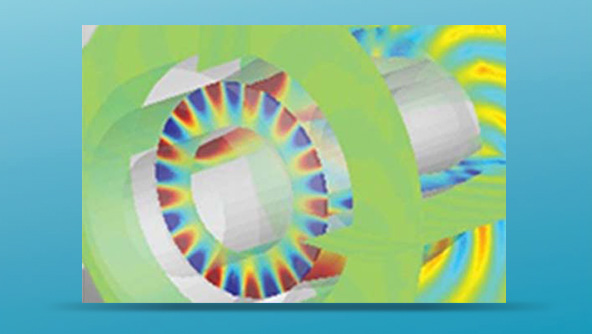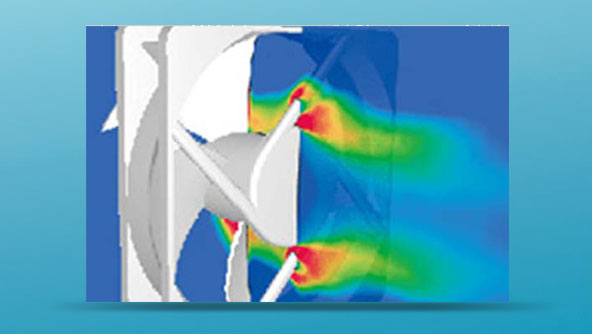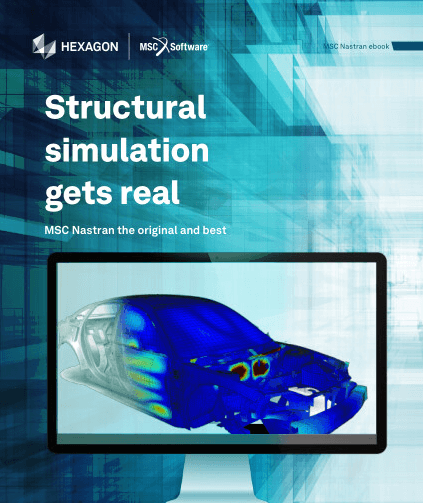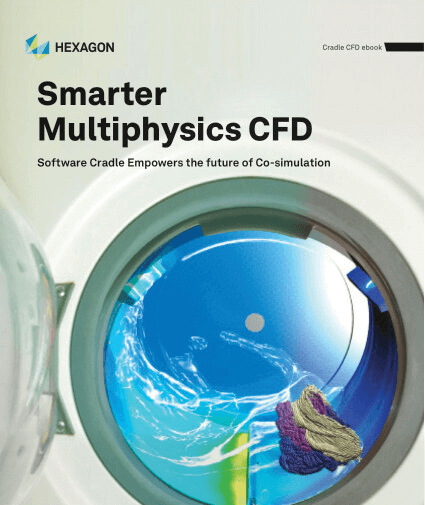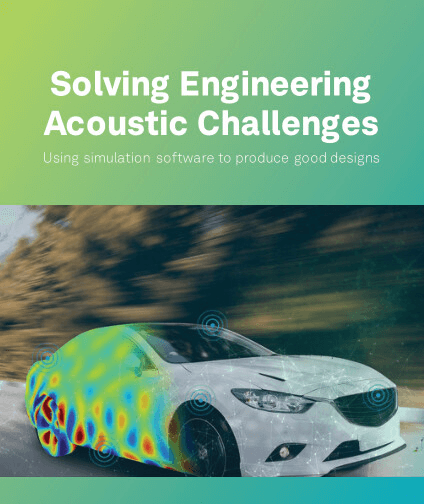HxGN Multiphysics Simulation and Analysis Software
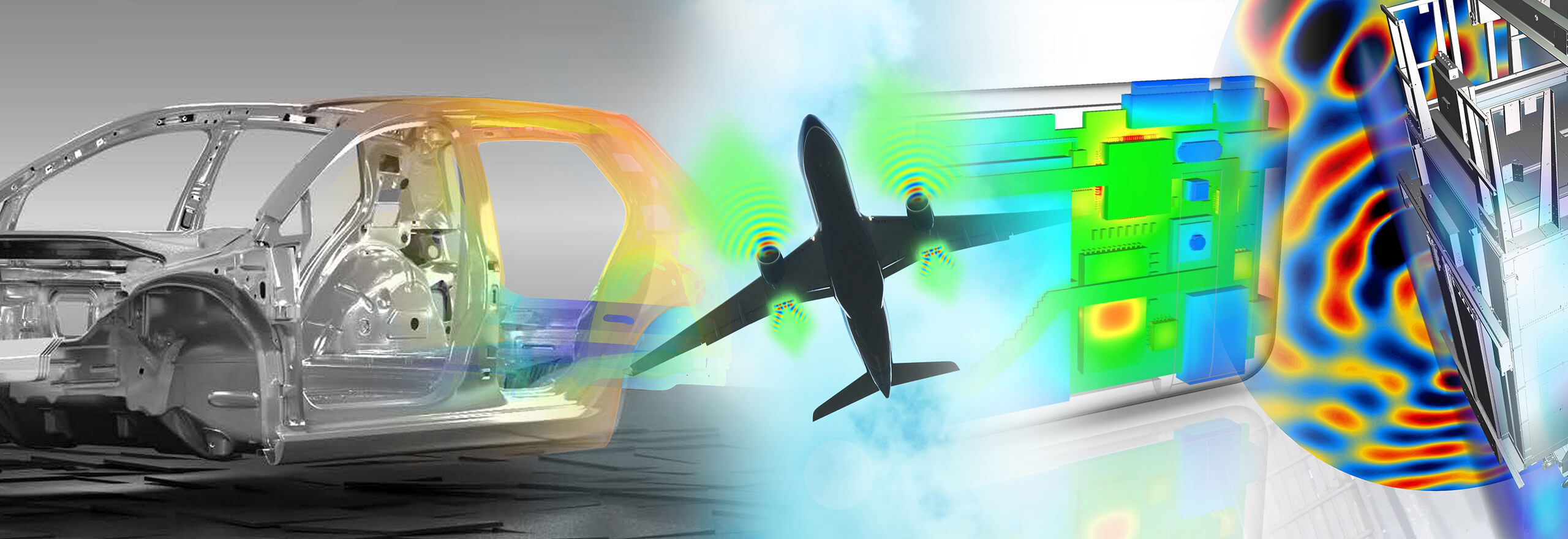
Accurately simulate real-world physics behaviour to gain valuable insights and inform innovative designs
Test and validate designs virtually to reduce physical prototypes and improve product performance with the Hexagon Multiphysics suite.
Solve real-world engineering problems with Hexagon’s cutting-edge, physics-based simulation software. Our multiphysics solutions take you beyond single-domain solutions by allowing you to simulate the complex interactions that you need to inform your design decisions. Understand complex interacting physics, like resonance induced by coupled structural vibration and acoustics, component fatigue driven by thermal cycling, noise generated by unsteady flows, and more.
The Hexagon multiphysics suite offers a scalable portfolio of solutions, from industry-standard solvers to model/geometry creation, connection to CAD, model preparation for simulation, and advanced meshing technologies. Multiphysics software gives you valuable insights so you can validate your designs for:
- Durability and fatigue
- Noise, vibration and harshness (NVH)
- Thermal cycling
- Thermal Management
- Fluid dynamics and thermal management
- Acoustic performance
Use industry-recognized solvers to validate and even certify designs and work faster with productivity capabilities like high-performance computing, powerful meshing, and application-dedicated solutions.
Our commitment to openness enables you to complement your existing workflow with Hexagon solutions.

Perform comprehensive structural analysis and predict performance
Multiphysics analysis gives you a holistic understanding of structural performance under combined loading scenarios. Improve the accuracy of fatigue life estimates and validate designs in a virtual environment to reduce the need for physical prototypes.
Tight coupling with computational fluid dynamics captures the interaction of structures with internal and external fluid flows including added mass effects, flow-induced vibrations, and aeroelastic flutter. Evaluate thermal stresses, temperature-dependent material properties, and loads. Uncover noise and vibration insights with combined acoustic and structural modelling to understand the interaction between structural dynamics and interior acoustics.
Solve static, dynamic, durability and fatigue problems fast and accurately with industry-trusted solvers and perform structural optimization for superior performance at lower costs.

Understand the interaction of fluids with other physics critical for product performance
Enhance computational fluid dynamics (CFD) analysis with insights about the interaction between fluid dynamics and thermal behaviours with structural and acoustic behaviours.
Evaluate the effect of structural deformation on fluid flows and vice versa through fluid-structure interaction (FSI) modelling. Combine fluid analysis and heat transfer to perform conjugate heat transfer – consider thermal conduction, convection, and radiation for fluids and solids in your design simultaneously – analysis to design heat exchanger electronics cooling systems. Link acoustics modelling with fluids to capture flow-generated noise from turbulence, cavitation, and unsteady vortices to create quieter fans.
With multiphysics CFD solutions, you can accurately predict these interactions and account for them in the design stage for better-performing products.

Supercharge acoustic analysis for quieter, higher-quality designs
A multiphyics approach supercharges acoustics analysis by simulating interactions between sound and other physics critical to product noise and vibration.
Integration with structural simulation enables vibroacoustic modelling to predict noise generated from vibration and vice versa. This capability is vital for quiet vehicle cabins in the automotive and aerospace industries.
Understanding the coupled physics between acoustics and computational fluid dynamics allows engineers to predict flow-induced noise from conditions like turbulence, unsteady wakes, or fans.
Acoustic analysis provides a comprehensive view of product noise and vibration issues. Hexagon’s acoustic simulation tools enable designers and engineers to understand the key parameters of the sounds we hear and design products for optimum acoustic performance.

Comprehensive analysis to enable virtual prototypes
Multiphysics simulation software provides invaluable co-simulation capabilities by linking different physics models and tools together for comprehensive virtual prototyping.
Co-simulation combines high-fidelity CAE tools tailored for specific physics domains into an integrated multiphysics workflow. For example, link CFD and FEA solvers to simulate complex fluid-structure interaction problems or explore how acoustics impact structures.
Because no single tool meets needs across all physics domains, Hexagon’s Multiphysics suite offers robust co-simulation capabilities and interoperable solutions that allow you to pre- and post-process models in interfaces like Patran, MSC Apex, or scFlow with solvers like Marc, MSC Nastran, or CradleCFD. Use best-in-class tools for each domain and enable domain experts to work collaboratively for concurrent modelling.
With integrated modelling across different physics disciplines, co-simulation provides a flexible and powerful multiphysics analysis approach for engineers across industries.
What is multiphysics simulation Software?
Multiphysics simulation software is used to model and analyse complex interacting physical processes. This analysis enables engineers, scientists, and researchers to study how physics interact and influence each other in a component or a system. Multiphysics simulation software offers engineers a comprehensive and realistic representation of real-world operations and provides insights into how products that are subject to interacting physical forces might perform. Here are some of the challenges multiphysics simulation can solve:
- Interdisciplinary simulation: Multiphysics simulation combines multiple physics disciplines, such as fluid dynamics, structural mechanics, heat transfer, and more. Crossing these discipline boundaries can be challenging for businesses. This is why Hexagon invests in creating interoperable solutions designed to work together.
- Complex interactions: In real-world systems, physics are not isolated. They interact and affect one another. Multiphysics simulations model these interactions to help engineers understand how iterative design changes will impact performance across multiple physics disciplines.
- Optimization and design: Engineers use multiphysics simulations to optimise the design of systems and devices. They can iterate quickly and confidently and use the results of their analysis to enhance performance, efficiency, and reliability while minimizing costs.
- Predictive analysis: Multiphysics simulations offer insights into how a system or device will behave under different conditions. This is especially valuable in industries like aerospace, where these conditions are too costly to test through physical prototypes alone and understanding how an aircraft structure reacts to external forces, thermal loads, and aerodynamics is crucial for safety and durability.
- Prototyping reduction: By performing virtual tests and analyses with multiphysics simulations, companies can reduce the need for physical prototypes and save time and resources.
- Safety and reliability: Multiphysics simulations can assess the safety and reliability of systems. For instance, in the nuclear industry, these simulations help predict how materials behave under conditions that are too extreme for safe physical testing.
- Innovation: Multiphysics simulations help engineers push the boundaries of knowledge and innovate by exploring the development of new technologies and materials.
- Product performance enhancement: Multiphysics simulations can help engineers identify weaknesses and opportunities for optimization early in the design process, allowing them to optimise products and ensure manufacturability.
What is multiphysics coupling?
When one physics solution affects the other, they are ‘coupled’. Depending on how strongly coupled the physics are, different mathematical methods may be used to improve the accuracy of the analysis. As an example, consider the physics of aircraft wings. For aero-acoustic calculations, the fluid flow strongly affects the acoustics, but the acoustics do not affect the fluid flow (in most cases). The physics can be coupled by solving them in sequence, using the best methods for each and maximising accuracy and speed. For an aircraft wing, however, the fluid flow affects the structure and the wing deformation affects the fluid flow, so both simulations should run in parallel while exchanging information with each other as they search for a converged state for each physical time step.
What is Hexagon’s multiphysics suite?
The Hexagon Multiphysics Suite is a scalable portfolio of products for multiphysics simulation. Designed for interoperability the multiphysics suite ensures seamless integration with your existing systems and other Hexagon products. It uses open industry standards like support for HDF5 output files and offers powerful simulation and modelling solutions trusted by industries to provide accurate, reliable analysis.
Is multiphysics software necessary for building digital twins?
Multiphysics capabilities are highly recommended for building accurate digital representations of reality. The more complex a product becomes, the more likely it is that multiple physics will be needed to fully capture it as a digital twin.
What physics domains does Hexagon include today in its Multiphysics Suite?
Structural, fluid, thermal and acoustic simulations are included in Hexagon’s Multiphysics Suite.
What software products are included in the Multiphysics Suite from Hexagon?
Hexagon’s multiphysics suite includes Actran, CAEFatigue, Cradle CFD, MSC Apex, MSC Nastran, MSC CoSim, Marc, Dytran, and Patran. Explore the Multiphysics Suite for individual product descriptions.
Are software products not included in Hexagon’s Multiphysics Suite interoperable with those in the suite?
Yes, multiple products interoperate at various levels of interoperability depending on the use cases they serve. Examples include ODYSSEE, Adams, Digimat, Simufact and Elements.
Where can I learn more about multiphysics simulation?
Please visit the NVH for Electric Vehicles page to see an example of a complete multiphysics solution that spans disciplines and tools to offer a powerful solution for the automotive industry.
-
 Product
ProductDytran is an explicit finite element analysis (FEA) solution for simulating short-duration events like impact and crash.
-
×Human-Assisted autonomyAutomated application of physics equations for explicit transient dynamics for crash impact and FSI studies
-
-
 Product
ProductMSC CoSim provides a unique, complete and holistic performance insight by coupling multiple simulation disciplines.
-
×Human-Assisted autonomyAutomated application of equations to simultaneously solve multi-physics applications
-

